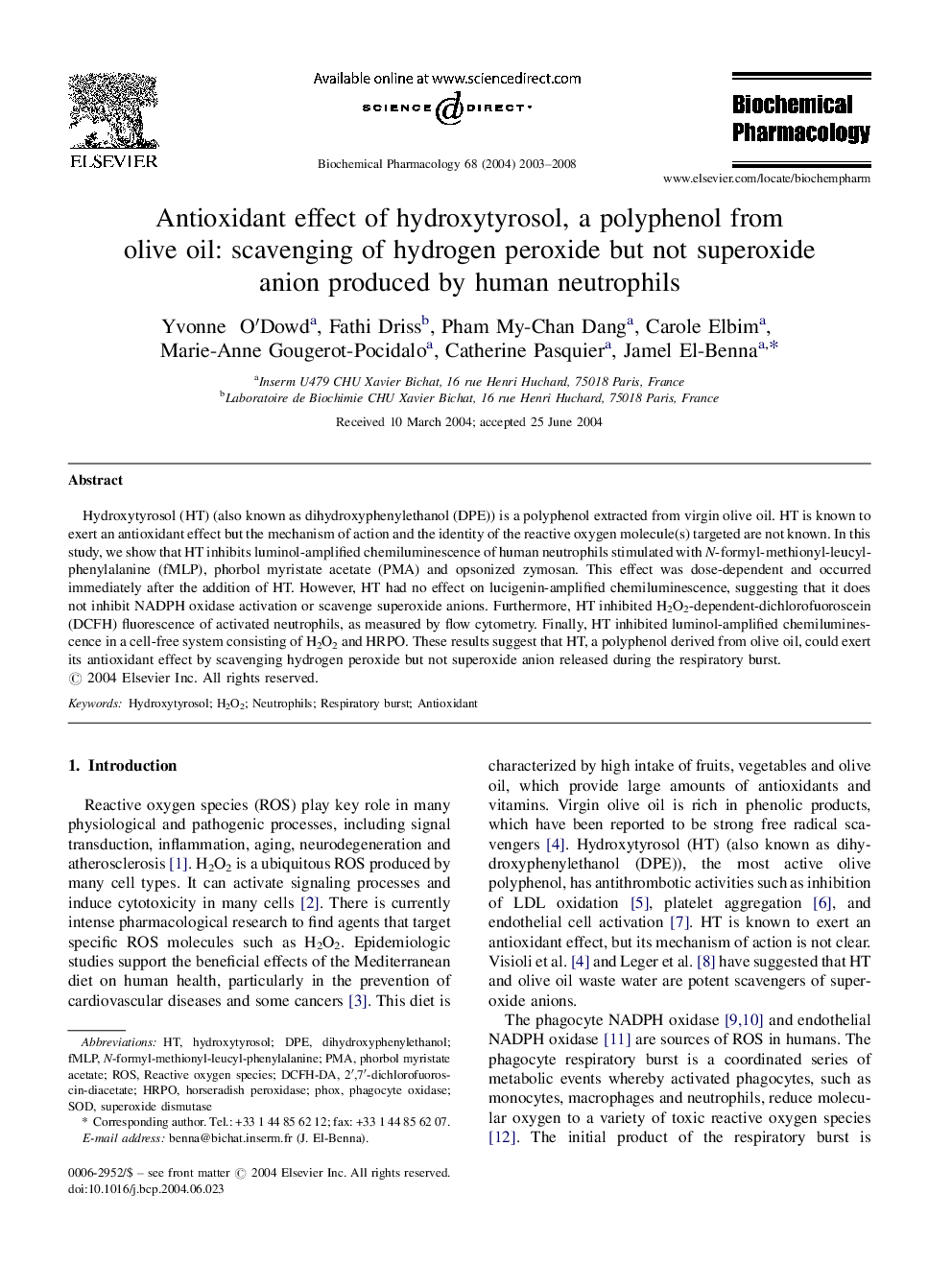| Article ID | Journal | Published Year | Pages | File Type |
|---|---|---|---|---|
| 2515979 | Biochemical Pharmacology | 2008 | 6 Pages |
Hydroxytyrosol (HT) (also known as dihydroxyphenylethanol (DPE)) is a polyphenol extracted from virgin olive oil. HT is known to exert an antioxidant effect but the mechanism of action and the identity of the reactive oxygen molecule(s) targeted are not known. In this study, we show that HT inhibits luminol-amplified chemiluminescence of human neutrophils stimulated with N-formyl-methionyl-leucyl-phenylalanine (fMLP), phorbol myristate acetate (PMA) and opsonized zymosan. This effect was dose-dependent and occurred immediately after the addition of HT. However, HT had no effect on lucigenin-amplified chemiluminescence, suggesting that it does not inhibit NADPH oxidase activation or scavenge superoxide anions. Furthermore, HT inhibited H2O2-dependent-dichlorofuoroscein (DCFH) fluorescence of activated neutrophils, as measured by flow cytometry. Finally, HT inhibited luminol-amplified chemiluminescence in a cell-free system consisting of H2O2 and HRPO. These results suggest that HT, a polyphenol derived from olive oil, could exert its antioxidant effect by scavenging hydrogen peroxide but not superoxide anion released during the respiratory burst.
